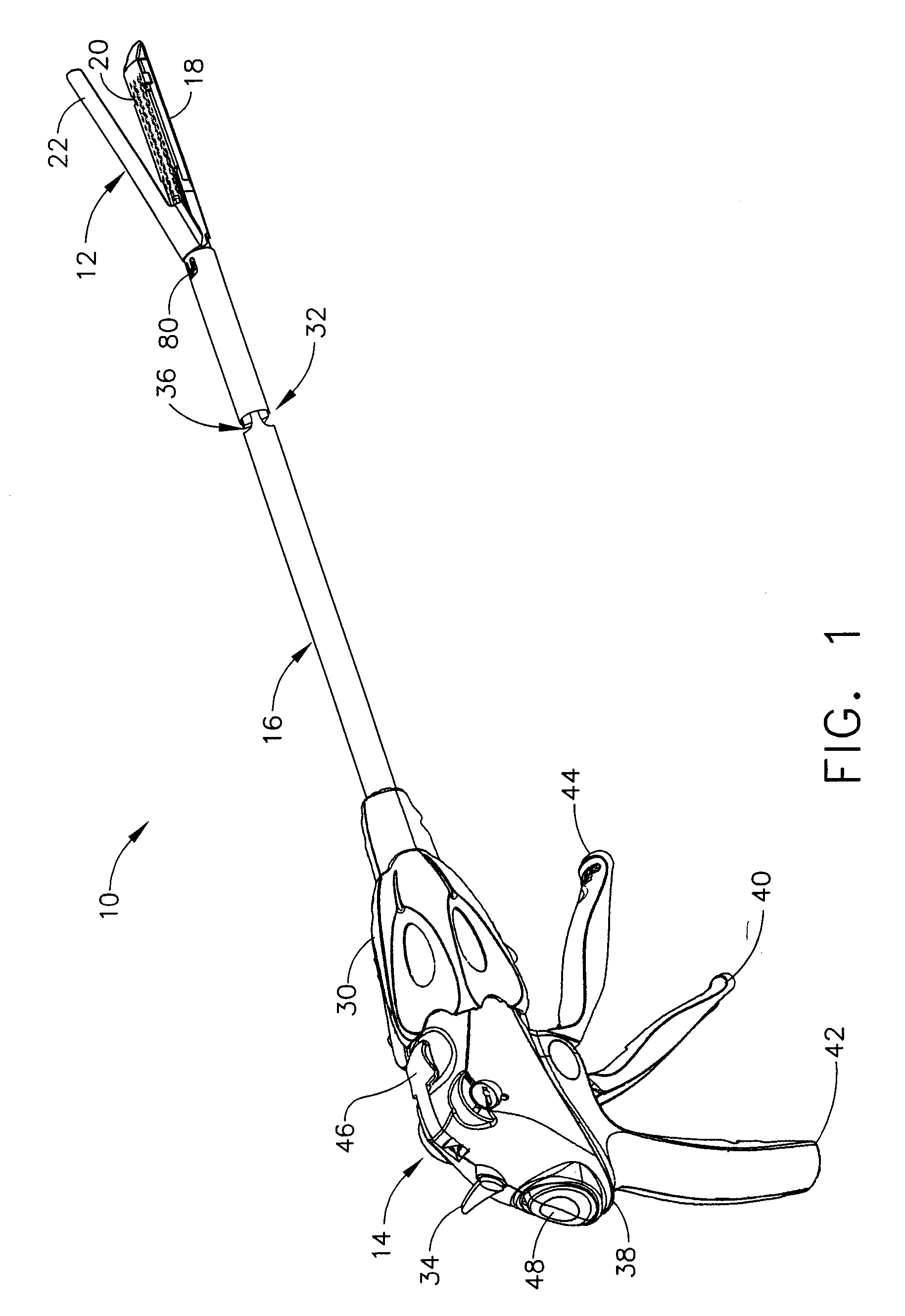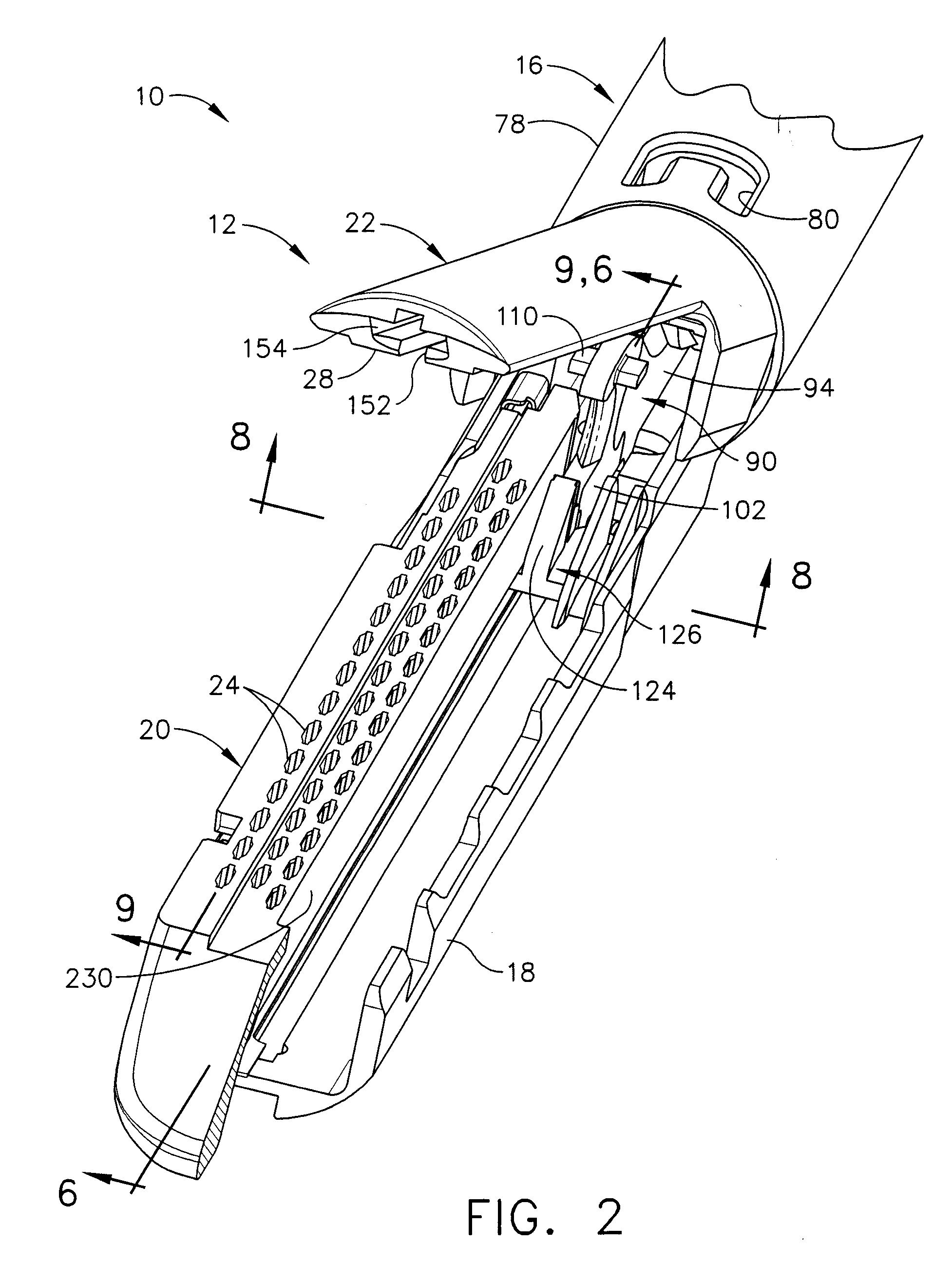Articulating surgical stapling instrument incorporating a two-piece e-beam firing mechanism
a firing mechanism and surgical stapling technology, applied in the field of surgical instruments, can solve the problems of complicated approaches to articulating surgical stapling and severing instruments, and achieve the effects of reducing cross sectional area and the ability to flex, enhancing use of articulating surgical instruments, and ensuring the accuracy of articulation
- Summary
- Abstract
- Description
- Claims
- Application Information
AI Technical Summary
Benefits of technology
Problems solved by technology
Method used
Image
Examples
Embodiment Construction
[0036] In FIGS. 1-3, a surgical stapling instrument 10 has at its distal end an end effector, depicted as a staple applying assembly 12, spaced apart from a handle 14 (FIG. 2) by an elongate shaft 16. The staple applying assembly 12 includes a staple channel 18 for receiving a replaceable staple cartridge 20. Pivotally attached to the staple channel 18 is an anvil 22 that clamps tissue to the staple cartridge 20 and serves to deform staples 23 (FIG. 3) driven up from staple holes 24 in the staple cartridge 20 against staple forming recesses 26 (FIG. 6) in an anvil undersurface 28 into a closed shape. When the staple applying assembly 12 is closed, its cross sectional area, as well as the elongate shaft 16 are suitable for insertion through a small surgical opening, such as through a cannula of a trocar (not shown).
[0037] With particular reference to FIG. 1, correct placement and orientation of the staple applying assembly 12 is facilitated by controls on the handle 14. In particula...
PUM
| Property | Measurement | Unit |
|---|---|---|
| Thickness | aaaaa | aaaaa |
| Length | aaaaa | aaaaa |
| Height | aaaaa | aaaaa |
Abstract
Description
Claims
Application Information
 Login to View More
Login to View More - R&D
- Intellectual Property
- Life Sciences
- Materials
- Tech Scout
- Unparalleled Data Quality
- Higher Quality Content
- 60% Fewer Hallucinations
Browse by: Latest US Patents, China's latest patents, Technical Efficacy Thesaurus, Application Domain, Technology Topic, Popular Technical Reports.
© 2025 PatSnap. All rights reserved.Legal|Privacy policy|Modern Slavery Act Transparency Statement|Sitemap|About US| Contact US: help@patsnap.com



